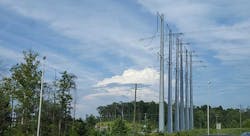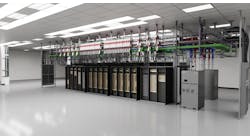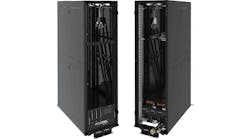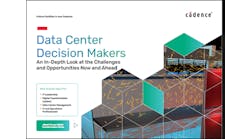Dominion Virginia Power and several community groups have reached an agreement that clears the way for new power lines to support a data center project in Haymarket, Virginia, ending a long-running dispute.
Dominion will bury three miles of a power line to support expansion of an Amazon Web Services project in Haymarket, while the Coalition to Protect Prince William County has agreed to end years of legal challenges to halt or reroute the power line.
The settlement ends an often bitter four-year controversy over the route of a 230 kV power line through Prince William County to support an AWS data center campus. Residents opposed the use of overhead power lines, which Dominion preferred as the most affordable option. Several routes were proposed and then blocked or dropped, and recent efforts by the coalition focused on blocking the expansion altogether, arguing that the additional capacity was unneeded because Amazon was the sole customer.
Instead, Dominion Virginia has agreed to bury a section of the power line that runs through contested areas along Route 66 near Haymarket. In return, the Coalition and the Somerset Crossing Homeowners Association agreed to discontinue legal challenges with the State Corporation Commission (SCC), which regulates Dominion.
“The Coalition and our allies have had one mission: Stop Dominion power towers,” said Coalition executive director Elena Schlossberg. “We concluded that this (agreement) was the best way to fulfill our mission, protect our community, and stop the power towers near homes. After years of dedicated and tireless efforts, the Coalition has achieved the community’s long-desired goal.”
Contentious Dispute Over Routes
The accelerating pace of data center development has prompted a growing number of local disputes, as residents seek to block or revise plans to build new facilities in their town. These NIMBY (Not in My BackYard) disputes involving data center projects have emerged over the years, but saw an upswing in the second half of 2017.
The Haymarket controversy has been the most high-profile of these disputes, featuring a highly-organized resistance effort from a group of residents that employed social media, legal challenges and political maneuvering to combat the power line plans. Although Amazon was publicly identified as the data center end user, Dominion took the lead in advocating for the new power line. A key point in the dispute was whether to use overhead power towers or the more expensive option of burying the line near sensitive areas close to homes and wildlife.
A solution was brokered by state Delegate Tom Horn (R-Fairfax County), who amended a utility regulation bill, adding language to create a pilot program for underground transmission routes in the Haymarket area. Dominion agreed to accept that plan if the community groups would end their legal and political efforts to halt the project. The new bill gives Dominion greater latitude to set rates, which in theory could be adjusted to account for the higher cost of projects using buried lines.
The AWS Haymarket Data Center
While the Amazon Web Services cloud spans the globe, a huge chunk of its Internet infrastructure is concentrated across Loudoun and Prince William counties in northern Virginia. It’s America’s busiest Internet intersection, the place where all the networks meet, anchored by the Equinix interconnection hub in Ashburn.
An Amazon Web Services data center in Haymarket, Virginia. A proposal for a new power line to support the project has prompted controversy in Prince William County. (Photo: Rich Miller)
That’s why Northern Virginia became the nexus of Amazon US East, its oldest and largest of AWS cloud regions. The company operates more than 30 data centers in the region, with multiple facilities in Ashburn, Sterling, Chantilly and Manassas. In recent years the AWS cloud pushed further south and west in Prince William County to Haymarket, where an existing structure was retrofitted to create a data center for use by Amazon. A second greenfield data center has recently been completed on adjacent land, with room for additional facilities.
The Coalition had been preparing to make the case to the SCC that the entire utility expansion was unnecessary, calling the project a “very expensive extension cord” for Amazon, with limited evidence that it would serve more than once client.
Will Deal Ease Prince William Tensions?
The Coalition to Protect Prince William County said the agreement didn’t address all its issues, but accomplished its primary goal.
A banner on a streetlight on Washington Street in the business district of Haymarket, Virginia. the focus of a dispute over a power expansion to support a local data center. (Photo: Rich Miller)
“While we were ready to continue the fight, we feel that the best way to honor the years of effort by community organizations, elected officials, and ordinary citizens is to secure the outcome we all want: stopping the power towers near homes and guaranteeing the partially-buried hybrid route,” said Schlossberg.
The Haymarket controversy has been a factor in tensions between Prince William officials and the data center industry. It’s not yet clear whether the resolution of the power line dispute will influence a new local controversy.
Officials in Prince William County are considering a tax hike that could triple the rate that data centers pay on computer equipment, hoping to offset a potential hike in county taxes and fees. The move comes as the data center market in Prince William is gaining major traction, as the industry expands beyond “Data Center Alley” in nearby Loudoun County.
The proposal has prompted strong resistance from the business community, including the Northern Virginia Technology Council and Prince William Chamber of Commerce.
“Data centers have been the major economic development driver for Prince William County, representing 95 percent of all capital investment in 2016 and 92 percent of all capital investment in the County since 2012,” the groups wrote in a letter to the Board of Supervisors. The NVTC also has coordinated meetings with data center executives and individual members of the board.






